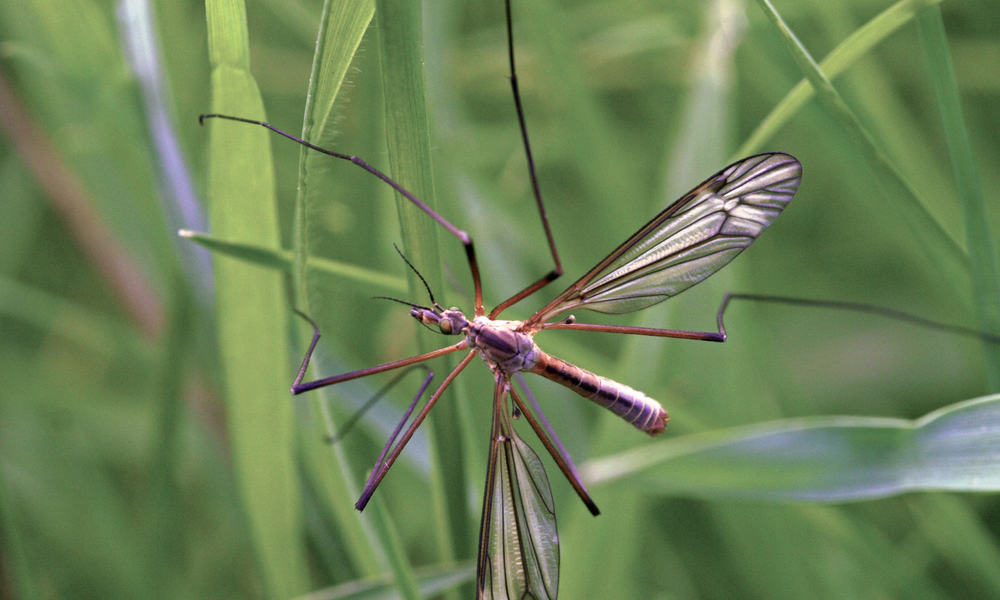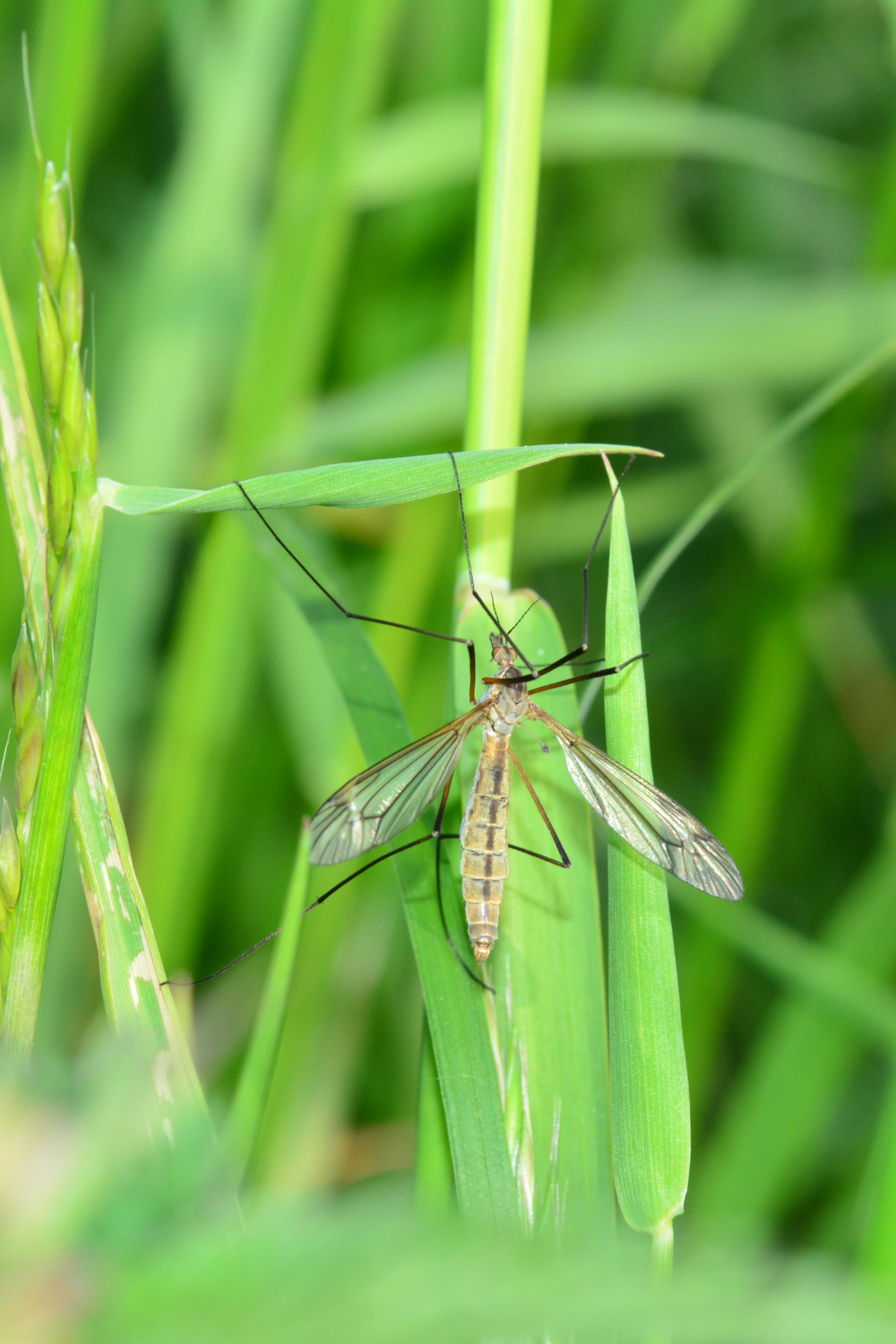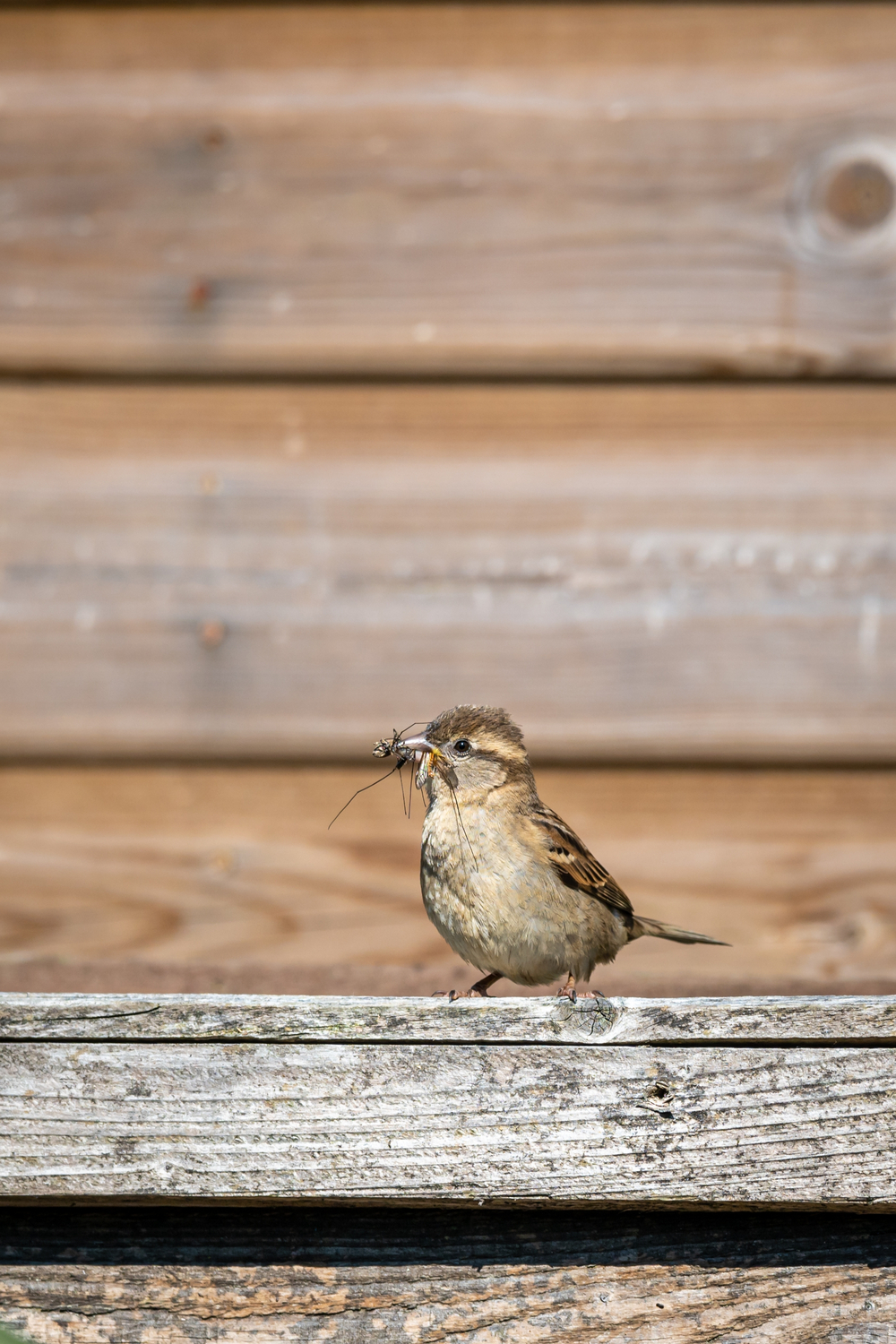Crane flies (daddy long legs, mosquito hawk) are insectс widespread throughout Europe and North America, with more than 15,000 different species.
Even though these bugs are big, they can’t harm you or your garden. On the other hand, crane fly larvae can exterminate your lawn. To protect your property in the right way, find out what do crane flies eat.
What Do Crane Flies Like to Eat?
Crane flies appear during late summer. These insects look like huge mosquitoes with long legs, but they don’t bite or sting humans. There are about 15,000 known species that belong to this family.
The adult crane fly size can vary with different species, but it generally attains a body length of 2.5 to 4 inches (6.5 – 10 cm), with a wingspan of 2.5 inches (6.5 cm). Crane flies’ bodies are typically brown, yellow, gray, or red.
On an adult male crane fly, you can see two membranous wings, long legs, and a long thin belly. On the other hand, the female crane fly has a thicker and more pointed stomach. It uses its ovipositor for depositing eggs inside the ground or water, so don’t confuse this sharp tip with a stinger.
The crane flies have large eyes and a pair of antennae on their heads. The segments number in each antenna can vary from 11 to 39 with different species. Smaller species can differ from mosquitoes and other flies due to the V-shaped seam on the body back.
Crane Fly Types |
|
| Scientific classification | Crane Fly |
| Kingdom | Animalia |
| Phylum | Arthropoda |
| Class | Insecta |
| Order | Diptera |
| Superfamily | Tipuloidea |
| Family | Tipulidae |
Since adult crane flies live only 10 to 15 days, they practically don’t feed on anything, but their larvae are voracious feeders. They feed on:
- Seedlings
- Grass roots
- Algae
- Flowers
- Decomposed wood
- Fungi
Some crane fly species’ larvae can be carnivores and feed on:
- Invertebrates
- Mosquito larvae
- Small insects
So, these larvae are predators. Some other species are shredders because they use their mouthparts to shred food. You can also find those that collect food from animal feces and similar decomposing organic material.
Harm of Crane Flies
Although crane flies are not dangerous to animals and humans, they are annoying when found indoors. On the other hand, these insects won’t cause any damage to your home, including furniture and wardrobe, or bite your pets. Plus, they never lay eggs indoors.
The fact is that adult flies won’t make the trouble even outdoors. Basically, all the damage they cause comes from their larvae.
Although crane flies have a short lifespan, they reproduce very quickly. An average female can mate as soon as it hatches from the pupa, and it will immediately lay approximately 300 mature eggs. The best place for laying eggs are moist soil and grass, typically in mid-September.
Crane flies hatch during October, when rainy weather is best for both eggs and larvae to survive. The larvae remain underground until late summer of the following year. During that period, they feed on the plant’s roots.
You will notice the first signs that something is wrong with your lawn during February, including:
- Slight grass thinning
- Spots of yellowed grass, unusual for that time of year
By the very spring of April and May, you will notice bare ground parts all over the lawn. Unfortunately, crane fly larvae can successfully destroy the whole vegetation in their area of residence.
You can expect these larvae to move close to the surface in search of other food. To make matters worse, their presence will attract predators that consider larvae food, such as:
- Birds
- Raccoons
- Skunks
These predators crawl intensively in search of larvae causing additional damage. Unfortunately, both larvae and these predators can destroy field crops, pastures, and golf courses besides lawns.
GET RID OF ADULT CRANE FLIES
Adult crane flies are insects that irritate even though they don’t harm. The best way to prevent adult crane flies from entering the house is to:
- Put safety nets on the windows
- Keep the doors closed whenever possible
Besides, it is crucial to find a natural way to prevent adults from laying eggs on your lawn. Only that way, you won’t harm your plants while trying to get rid of these insects.
1. Neem oil
This oil is made from the Azadirachta indica tree seeds and is a natural pesticide. It directly affects the insect’s ability to feed and reproduce.
Since this oil is not-toxic to pets and humans, you can use it without limits. The best option is to spray it on the lawn or directly over the plants, depending on the estimated need.
2. Garlic
This plant is an efficient repellent you can use to fight crane flies. You can use both essential oil or ground garlic and mix it with water before watering the lawn. The smell will refuse adult crane flies from laying eggs in your backyard.
3. Citronella
You can use this repellent in the entrance places, like doors, windows, and ventilation openings. Besides, candles that contain citronella essential oil will successfully protect you from crane flies if you have an outdoor party.
4. Other essential oils
There are also a few other essential oils you can use:
- Mint oil
- Lemongrass oil
- Lavender oil
- Basil oil
You can apply these oils in the same way as neem and garlic essential oil. Only remember that some essential oils can be harmful to grass and pets, so you need to be careful with applying.
GET RID OF CRANE FLY LARVAE
Crane flies’ larvae are different from adults, and you can’t destroy them quickly. There are several ways to deal with them before they ruin your lawn, including a few efficient natural methods.
5. Nematodes
Nematodes are an environmentally friendly solution because they don’t involve chemical products use. Steinernema feeliae is a natural predator for these particular larvae. You can buy it in containers and sprays. These beneficial nematodes can efficiently reduce the larval population by up to 50% on average.
6. Predators
You can get rid of crane fly larvae by attracting predators that feed on them. For instance, some birds species are feed on both crane flies’ adults and larvae.
As you have already known, birds will settle in your yard if they feel comfortable and safe there. The best way to attract them is to set up bird feeders, water containers, and cozy birdhouses.
Although it can sound strange to you to attract them with food, it is the only way to stay. Very quickly, birds will start looking for natural food, including larvae, in the environment.
In addition to reducing the crane fly population, birds will prevent the other insect’s reproduction and protect your lawn from many other pests.
You can also attract other predators to exterminate crane fly larvae, including bats, non-invasive mice types, and frogs.
7. Maintenance and irrigation
Regular maintenance, such as mowing, fertilizing, and removing cut grass, will prevent adult crane fly from laying eggs on the lawn.
Since crane fly larvae prefer a humid environment, the best solution is to moderately water the lawn. It is crucial to avoid creating puddles on the lawn surface.
In addition to maintaining the lawn, you need to take care of the trees and flowers in your courtyard. Regular pruning of trees and shrubs, timely fruit picking, and removing fallen leaves will protect your environment from the crane fly invasion.
8. Pesticides
Pesticides are chemical products you can use in the fight against insects when natural methods are not satisfactorily effective. When discussing crane flies, you can use pyrethroid or imidacloprid, either in liquid or granular form. These insecticides will kill larvae by causing paralysis.
The best time to use them is the beginning of spring, more precisely in mid-April, when the eggs hatching ends. Crane flies larvae have tough skin and often hide during the day, and they are difficult to kill.
That is why many other insecticides are not efficient enough. However, any of those available on the market can reduce the crane fly larvae population to some extent.
However, it is desirable and necessary to be careful with these chemicals as they can harm bees and other beneficial insects.
9. Bug zappers
The advantage of these electronic insect killers is their automatic work. The light it emits attracts all kinds of insects, including crane flies. When insects run into the zapper, they get an electric shock and die. You can place these appliances in several places around the house.
10. Ask professionals for help
When crane flies create too many problems, or you don’t have the time or desire to solve the issue yourself, you can hire professionals. They have experience and appropriate equipment to do the job.
Summary
Unlike harmful larvae, adult insects are harmless, don’t bite, and never spread diseases. They will never damage your furniture or clothes after entering the house. On the other hand, larvae are voracious feeders that can severely damage your lawn.
The best option to eliminate the larvae population is to attract predators such as birds, frogs, and bats to your yard. However, you can also use some natural repellents or chemicals to solve the problem.


